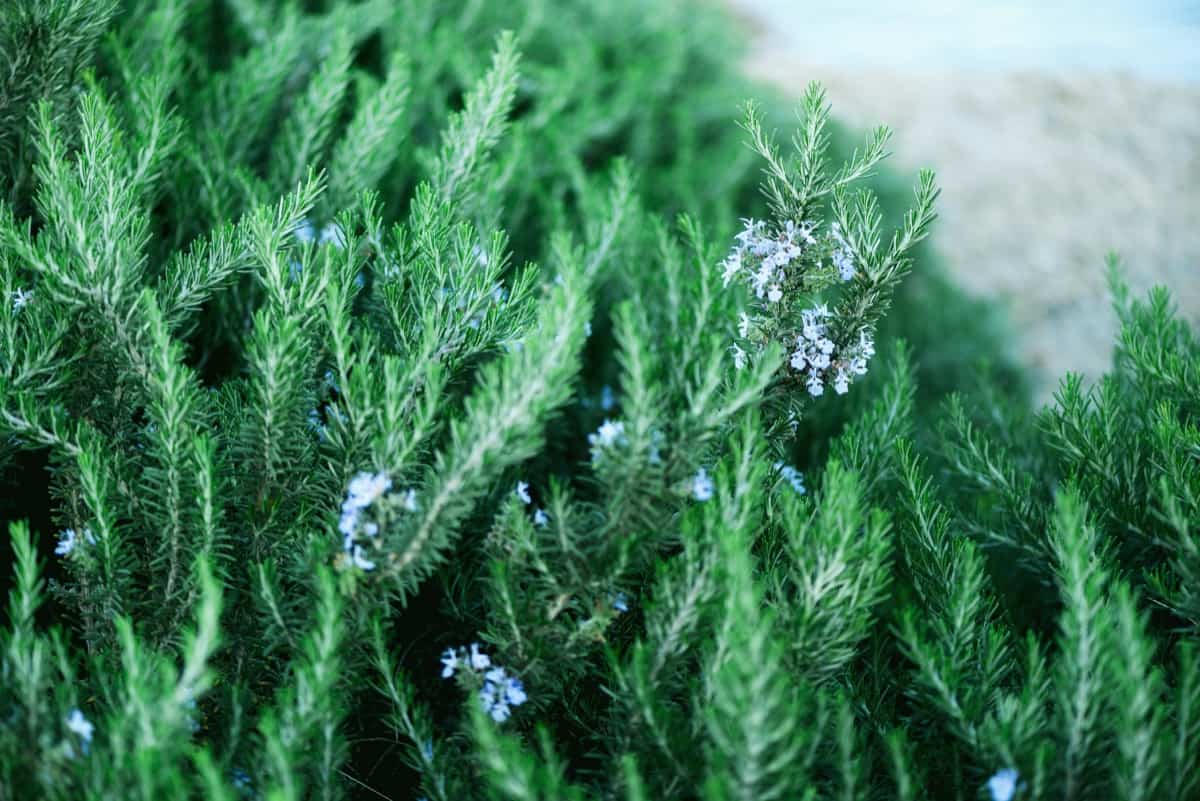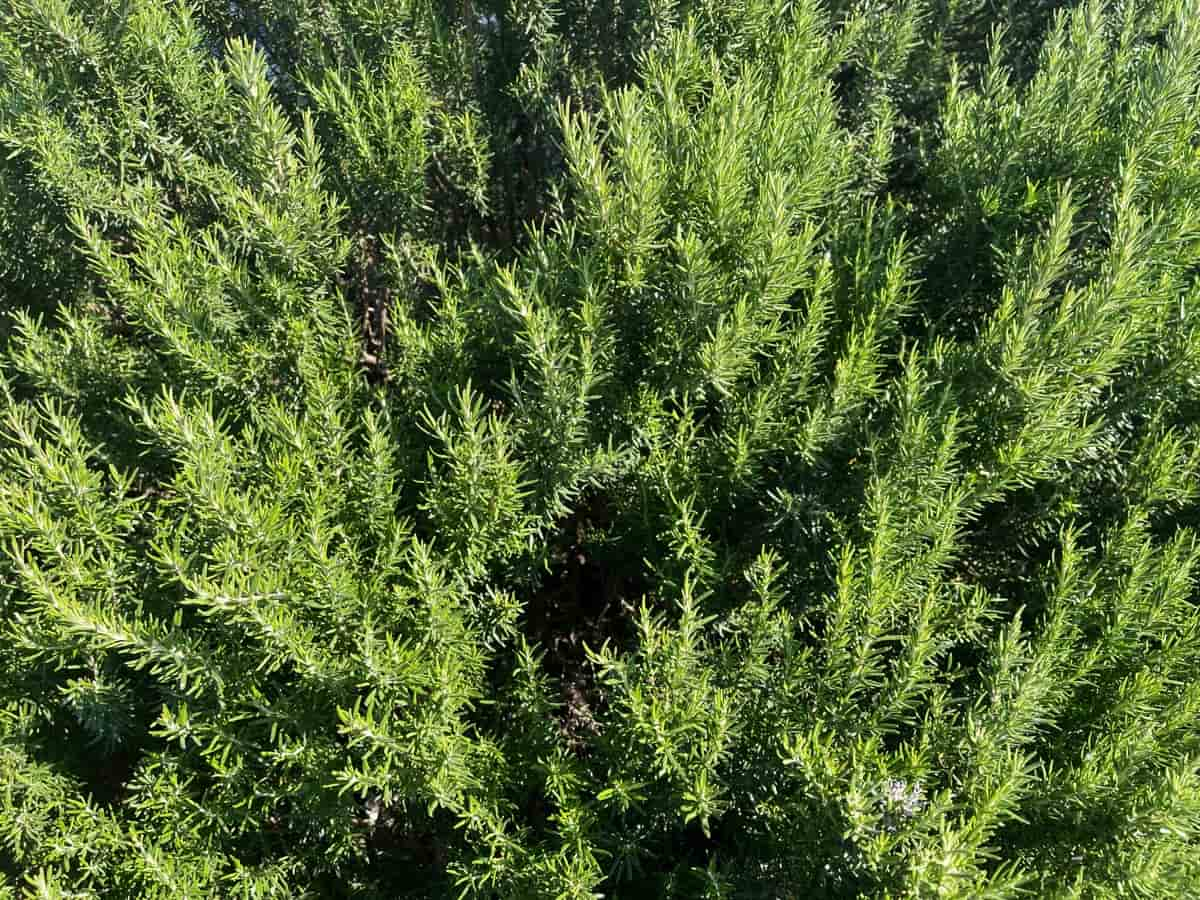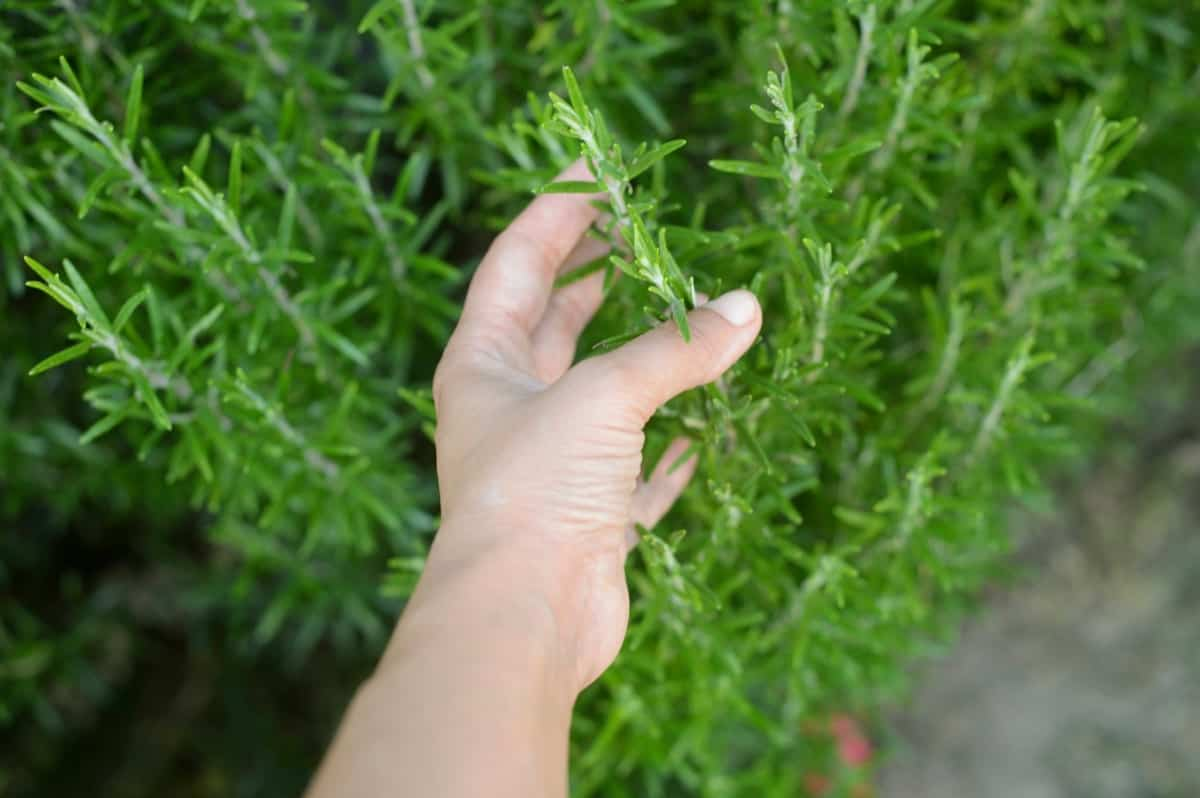From cooking to aromatherapy, the Rosemary plant has been used for centuries. Growing Rosemary is not as daunting as it may seem. With the right care, you can grow full, bushy Rosemary plants that provide abundant fragrant leaves for cooking or other purposes. Growing fuller and bushier Rosemary adds a beautiful aesthetic to your garden and provides numerous benefits.

One of the benefits of growing fuller and bushier Rosemary is its ability to attract pollinators such as bees and butterflies. This helps promote biodiversity in your garden and ensures that other plants are pollinated too. Rosemary is also known for its medicinal properties. In terms of culinary use, fresh Rosemary adds depth of flavor to dishes. Moreover, growing fuller Rosemary bushes allows you to harvest more leaves at once without damaging the plant significantly; this means you will have enough herbs to last throughout the year.
Expert Tips to Grow Fuller and Bushier Rosemary
Choose Well-Draining Soil
You should consider many factors when growing Rosemary, the type of soil you plant it in. Rosemary plants prefer well-draining soil that allows water to flow easily, preventing root rot. This means avoiding heavy clay soils and opting for sandy or loamy soils. When planting your Rosemary, amend the soil with organic matter to improve drainage and provide essential nutrients for growth.
It’s also crucial not to overwater your Rosemary, which can lead to waterlogging and damage the roots. A great way to ensure proper drainage is using raised garden beds or containers with drainage holes at the bottom. These allow excess water to drain away from the roots, keeping them healthy and promoting optimal growth.
If you’re unsure whether your soil is draining properly, try conducting a simple percolation test by digging a hole around 12 inches deep and filling it with water. If it takes more time for all the water to drain away completely, your soil may have poor drainage. Ensuring that your Rosemary has access to well-draining soil is essential for its health and vitality. With proper attention to its growing conditions, you’ll be rewarded with fuller and bushier plants perfect for cooking or adding fragrance around your home.
In case you missed it: Best Tips to Care for the Lawn in Winter

Choose a well light location
Rosemary is a Mediterranean herb, and it loves sunlight. Providing enough light is essential to grow fuller and bushier Rosemary. Make sure that the location where you’re growing your Rosemary receives at least 6 hours of direct sunlight daily. If you’re growing Rosemary indoors, place it in a south-facing window where it can receive plenty of sunshine throughout the day. However, if natural light isn’t sufficient for indoor plants, you may need to provide them with artificial lights, such as fluorescent bulbs or LED grow lights.
When placing potted plants outside in sunny locations, ensure they are not exposed to strong winds that could damage their delicate foliage. Also, note that too much direct sun can cause leaf burn on young shoots, so be mindful of how long you leave them outside during peak daylight hours. The right light exposure ensures healthy growth while preventing any adverse effects from overexposure or insufficient illumination. So, make sure to give your Rosemary plant ample amounts of sunshine.
Give Less Water
Rosemary is a plant that doesn’t like overwatering. Less water is better for its growth and survival. Overwatering may lead to root rot which can kill your Rosemary plant in no time. When it comes to watering, the soil should be allowed to dry out completely before the next watering session.
More frequent watering may be required during hot weather conditions or when grown indoors with the heating on, as the soil dries out faster than normal. It’s important not to let your Rosemary sit in standing water as this will cause damage and, ultimately, kill your Rosemary plant. After each watering session, ensure any excess water is drained away from the pot or container.
Over-watering leads to other problems, such as reduced flavor and aroma quality of harvested leaves because too much moisture causes them to go limp and lose their essential oils quickly, making them unattractive for culinary uses. Less water is best when growing Rosemary plants; ensure that you allow soil drying periods between each watering session while checking humidity levels regularly, especially during hot weather conditions, so you don’t accidentally overdo things.
In case you missed it: Growing Best Bromeliads Indoors: DIY Steps Explained

Multiplying
Multiplying Rosemary is a great way to ensure that you always have an abundance of this aromatic herb. There are two methods for multiplying: through cuttings or seeds. If you propagate using cuttings, take them from healthy and mature plants during their dormant season. Cut about 3-4 inches from the tip of the branch and remove all leaves except for the top ones. Dip the cutting end in rooting hormone powder before planting it in well-draining soil. Keep the soil moist and warm until new growth appears.
The other method is sowing seed directly into well-prepared soil outdoors or indoors under grow lights. Rosemary seeds require light to germinate. Be patient whether propagating with cuttings or seeds; it can take several weeks to establish roots and grow. Once established, transplant them into larger pots or transfer them outside into your garden beds. Multiplying Rosemary allows you to enjoy its benefits throughout your home while adding beauty and fragrance to your landscape.
Refresh Soil Each Year
One of the secrets to growing fuller and bushier Rosemary is refreshing the soil each year. Over time, the soil’s nutrients can deplete, leading to poor plant growth and development. To ensure healthy growth, it’s essential to refresh your Rosemary’s soil at least once a year. You can remove dead leaves or debris that may have accumulated on top of the soil to refresh your Rosemary’s soil.
This will allow you to get a better look at the condition of the soil underneath. Next, loosen up the topsoil using a garden fork or spade. This process helps aerate and loosen compacted soils while also promoting proper drainage. After loosening up the topsoil, add fresh compost or organic matter like dried leaves or grass clippings. These materials contain essential nutrients that can help enrich your plant’s growth over time.
In case you missed it: Growing Organic Rosemary in Containers, and Pots

Once you’ve added new organic matter to your plant’s potting mix, water it thoroughly until moisture reaches deep into its roots. Then cover it with mulch such as bark chips or straw which will help conserve moisture and prevent weed growth. By refreshing your Rosemary soil each year by following these simple steps above, you can promote optimal nutrient uptake for healthier-looking plants.
Pruning
Pruning is a crucial aspect of growing fuller and bushier Rosemary plants. It helps to keep the plant in shape, promotes new growth, and prevents it from becoming too leggy or woody. The ideal time for pruning your Rosemary plant is during spring or early summer when new growth appears. To prune your Rosemary plant correctly, you will need to use sharp shears or scissors that are clean and sanitized to avoid spreading any diseases.
You can remove any dead or damaged branches before shaping the remaining ones. When pruning, always aim to remove no more than one-third of the total length of each branch at once. The goal is to create a compact, tidy-looking shrub while encouraging fresh shoots on every stem. By doing so, you’ll enjoy a healthier, bushier Rosemary plant full of flavor all year round.
Pinching
Pinching is a simple but game-changing technique to help you grow fuller and bushier Rosemary. It involves removing the topmost leaves of new growth to encourage side branching and more foliage growth. This method helps create a compact, healthy plant with plenty of fresh herbs for your recipes. To start pinching, wait until the new shoots have grown at least two inches long before nipping them off gently with your fingertips or using scissors.
Make sure to leave some leaves on each stem so that it can continue photosynthesis. Doing this regularly during the growing season will stimulate lateral bud production, which leads to dense branching and lush greenery. Pinch once every few weeks to keep your plants full and vigorous. Remember that too much pinching can stress out your Rosemary plants, especially if they’re already weak or struggling due to poor soil conditions or overwatering. So always monitor their overall health and adjust accordingly.
In case you missed it: How to Grow Rosemary from Seed to Harvest: Check How this Guide Helps Beginners

Fertilize Right
Fertilizing your Rosemary plant is the most important thing you can do to ensure its growth and health. But it’s important to fertilize right, or you could damage your plant. Firstly, use organic fertilizer that is high in nitrogen. Rosemary plants love nitrogen since it encourages leafy growth and helps them maintain their bright green color. You can purchase organic fertilizer from any garden store or make your own by mixing compost with bone meal.
Apply the fertilizer sparingly so as not to over-fertilize the plant. Fertilize only during the growing season – typically spring through early summer when the plant is actively growing. Fertilizing outside this timeframe won’t be effective since Rosemary goes dormant during cold weather months. Always water well after applying fertilizer so that it gets absorbed into the soil and doesn’t wash away before being absorbed by roots.
Harvest Well
Harvesting your Rosemary is an essential step in growing fuller and bushier plants. It helps you enjoy the herb’s flavor and encourages new growth. To harvest well, you need to know when and how to do it. Firstly, wait until your plant reaches at least six inches tall before harvesting sprigs. This allows for proper root development and ensures the plant can recover quickly after pruning.
When harvesting, use sharp scissors or shears to cut off stems from the base of the plant rather than pulling them out by hand. This will prevent damage to other parts of the plant and encourage new growth. You should also avoid cutting more than one-third of each stem at a time, as this could weaken your Rosemary. Instead, focus on removing just a few sprigs every two weeks during its growing season. Good care practices are key for healthy and productive Rosemary plants year-round.
In case you missed it:

Conclusion
Growing fuller and bushier Rosemary requires effort, but the rewards are worth it. Rosemary is not only a popular cooking herb, but it also adds an appealing look to any garden or landscape. Growing fuller and bushier Rosemary is not only an enjoyable experience but also a rewarding one. Remember always to start with quality seedlings or cuttings from reputable sources.
Ensure that you provide them with adequate sunlight, well-drained soil, and sufficient water for optimal growth. Don’t forget to harvest your Rosemary correctly when it’s ready; this will encourage more growth on the plant. Growing fuller and bushier Rosemary requires patience, diligence, and attention to detail, but it is worth the effort once you see those fragrant blooms flourishing in front of you.
- How to Grow Tomatoes Organically at Home: A Comprehensive Guide
- Organic Gardening on a Budget: Low-Cost Methods and Materials
- Gongura Seed Germination and Planting Methods
- Cabbage Seed Germination and Selection
- Broccoli Seed Germination and Selection
- Asparagus Seed Germination and Variety Selection
- Seasonal Flower Gardening: Best Practices for Spring, Summer, Fall, and Winter
- How to Grow Hibiscus from Flower
- Plantation Ideas for Home Decoration: A Beginners Guide
- Flower Garden Designs and Layouts for Beginners
- Planting and Spacing Techniques in Papaya: A Beginner’s Guide
- Growing Gold: Essential Techniques for Planting Pineapples
- How to Make Kalanchoe Plant Bushy: Home Remedies and Solutions
- 11 Reasons Why Your Gardenia is Not Blooming: Home Remedies and Solutions
- Eco Elegance: The Guide to Designing a Drought-Tolerant Landscape
- Gardening on a Slope: Strategies for Hillside Landscaping
- Nourish and Flourish: Top Organic Mulches for Thriving House Plants
- Everything You Want to Know about Indian Mogra Flower: Discover Uses and Growing
- Green Thumb Success: Expert Tips for Cultivating Greenhouse Pumpkins All Year Round
- Maximize Growth & Flavor: The Ultimate Guide to Companion Planting in Herb Gardens
- How to Control Rhododendron Problems Naturally: Home Remedies and Organic Ways to Fix Them
- Natural Magic: The Remarkable Benefits of Cinnamon for Plants
- Best Steps to Revive Dying Tulip with Natural and Organic Treatment
- 10 Reasons Why Your Angel Trumpet is Not Blooming: Remedies and Treatment
- How to Fix Periwinkle Leaf and Flower-Related Problems: Natural Remedies and Solutions
- How to Fix Zinnias Leaf and Flower Problems: Discover Natural and Home Remedies
- Organic Steps to Induce Lemon Tree Flowers: A Comprehensive Guide
- Bloom Booster: Crafting the Perfect Homemade Bougainvillea Fertilizer
- Optimizing Growth: A Guide to Applying NPK Fertilizer for Potted Plants
- 10 Best Homemade Fertilizers for Rubber Plant: DIY Recipes and Application Method
- How to Boost Female Pumpkin Flowers: Effective Steps for More Flowers and High Yields
- Transform Your Indoor Garden: Top Benefits of Pink Salt for Houseplants
- 10 Best Homemade Fertilizers for Peacock Plants (Calathea): Easy DIY Guide
- Unlock Blooms: 9 Reasons Why Your Potted Chrysanthemum is Not Blooming
- 8 Reasons Why Your Potted Hibiscus is Not Blooming: Fix it with Simple Solutions
- Unlock Blooms: 9 Key Reasons Your Potted Frangipani Won’t Flower